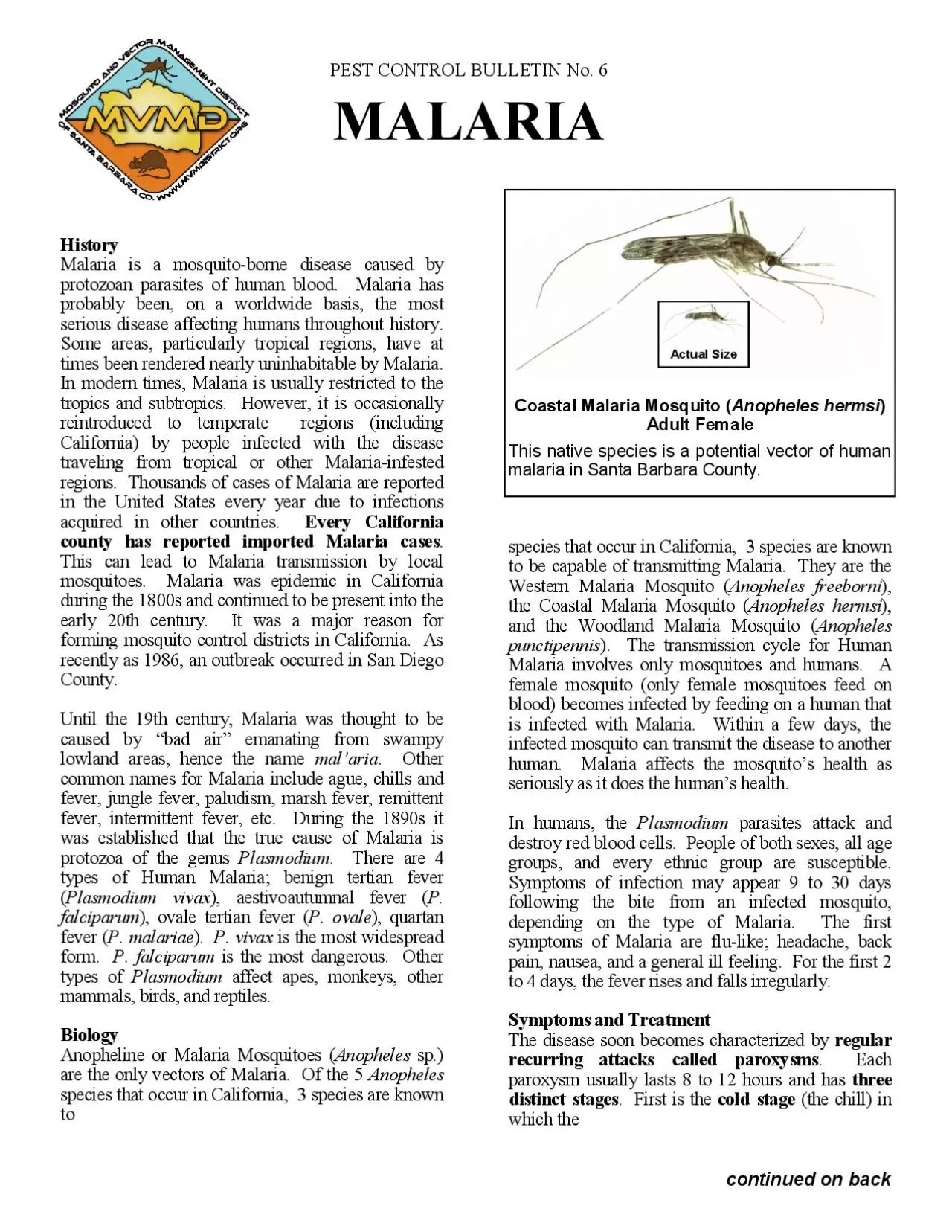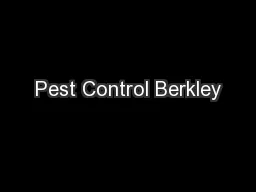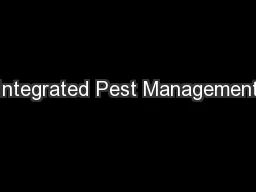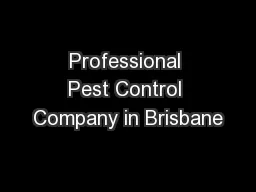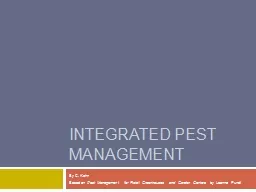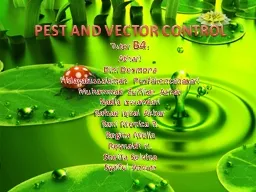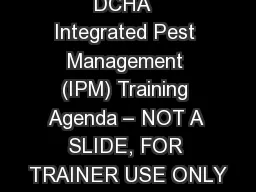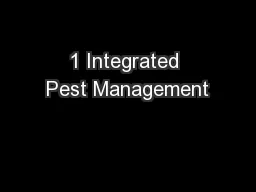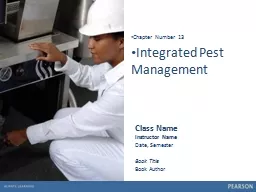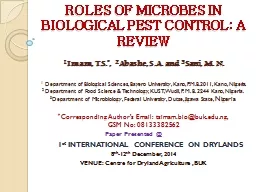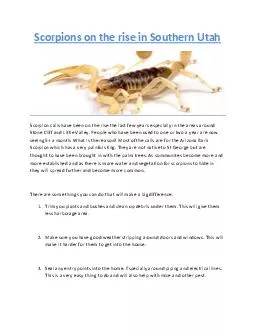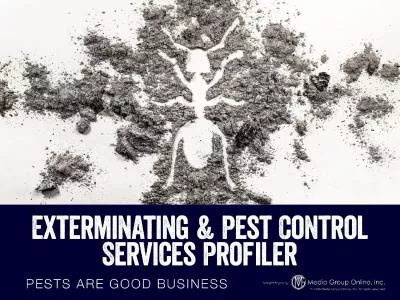PDF-PEST CONTROL BULLETIN No 6
Author : desha | Published Date : 2022-08-30
MALARIA History Malaria is a mosquito borne disease caused by protozoan parasites of human blood Malaria has probably been on a worldwide basis the most serious
Presentation Embed Code
Download Presentation
Download Presentation The PPT/PDF document "PEST CONTROL BULLETIN No 6" is the property of its rightful owner. Permission is granted to download and print the materials on this website for personal, non-commercial use only, and to display it on your personal computer provided you do not modify the materials and that you retain all copyright notices contained in the materials. By downloading content from our website, you accept the terms of this agreement.
PEST CONTROL BULLETIN No 6: Transcript
Download Rules Of Document
"PEST CONTROL BULLETIN No 6"The content belongs to its owner. You may download and print it for personal use, without modification, and keep all copyright notices. By downloading, you agree to these terms.
Related Documents

